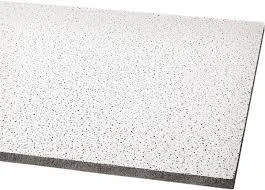Dec . 05, 2024 15:22 Back to list
ceiling tie wire
The Importance of Ceiling Tie Wire in Construction
Ceiling tie wire, often overlooked in the vast array of construction materials, plays a vital role in ensuring the stability and safety of ceilings in various structures. This specialized wire is commonly used in the construction and renovation of commercial and residential buildings to support ceiling systems, particularly suspended ceilings. Understanding its function, types, and proper installation is essential for any construction project.
What is Ceiling Tie Wire?
Ceiling tie wire is a type of wire specifically designed to support and stabilize suspended ceiling systems. It is typically made of galvanized steel to provide strength and resistance to rust and corrosion. The wire is used to connect ceiling grids to structural elements, such as beams or joists, ensuring that the ceiling is securely anchored and capable of bearing the weight of acoustical tiles, light fixtures, and other overhead components.
Types of Ceiling Tie Wire
There are various types of ceiling tie wire available, each suited for different construction needs. The most common include
1. Galvanized Steel Wire This is the most widely used type due to its strength and durability. The galvanization process protects the wire from corrosion, making it suitable for both indoor and outdoor applications.
2. Soft Drawn Wire This type is more malleable and easier to work with but is generally not used in situations requiring significant load-bearing capacity.
3. High Tensile Wire For projects that necessitate additional strength, high tensile wire is available. It is often utilized in commercial projects where heavier materials are used and additional support is crucial.
Installing Ceiling Tie Wire
Installing ceiling tie wire requires both knowledge and precision. Here are the basic steps involved in the process
1. Planning Before installation, it is essential to plan the layout of the ceiling grid. Ensuring accurate measurements will facilitate proper wire length and positioning.
ceiling tie wire

2. Cutting the Wire The tie wire is typically sold in rolls. It should be cut to appropriate lengths based on the distance between the ceiling grid and structural supports.
3. Attaching the Wire The wire is usually attached to the structural members using clips, knots, or other fastening methods. It is crucial to ensure that the wire is taut to provide adequate support for the ceiling grid.
4. Securing the Ceiling Grid After the tie wire is in place, the ceiling grid can be installed. The wire supports ensure that the grid remains level and securely attached, minimizing any risk of sagging or collapse.
Benefits of Using Ceiling Tie Wire
The use of ceiling tie wire provides several benefits
- Enhanced Safety It prevents the ceiling from collapsing, thereby protecting the occupants and contents of the building.
- Load Distribution Tie wire helps distribute the weight of the materials used in the ceiling evenly, reducing the stress on individual components.
- Flexibility in Design With the support of tie wire, ceilings can be designed creatively without the fear of compromising structural integrity.
- Cost-Effectiveness The use of ceiling tie wire can reduce the need for more expensive structural supports, making it an economical choice for contractors and builders.
Conclusion
Ceiling tie wire may seem like a small component in the grand scheme of construction, but its significance cannot be overstated. By providing essential support and stability to suspended ceilings, it ensures that structures are safe and durable. For anyone involved in construction, having a thorough understanding of ceiling tie wire and its proper installation is crucial for delivering high-quality work that stands the test of time. As the construction industry evolves, the demand for reliable and effective materials like ceiling tie wire will continue to grow, emphasizing its importance in modern building practices.
-
Quality Ceiling Trap Doors & Access Panels | Easy & Secure AccessNewsAug.30,2025
-
Durable Ceiling T Grid Systems | Easy InstallationNewsAug.29,2025
-
PVC Gypsum Ceiling: Durable, Laminated Tiles for Modern SpacesNewsAug.28,2025
-
Pvc Gypsum Ceiling Is DurableNewsAug.21,2025
-
Mineral Fiber Board Is DurableNewsAug.21,2025
-
Ceiling Tile Clip Reusable DesignNewsAug.21,2025







